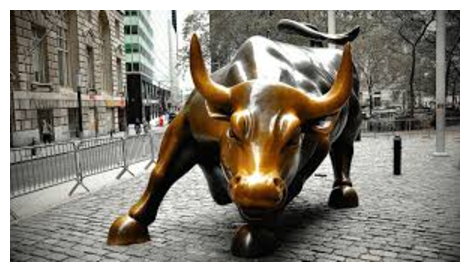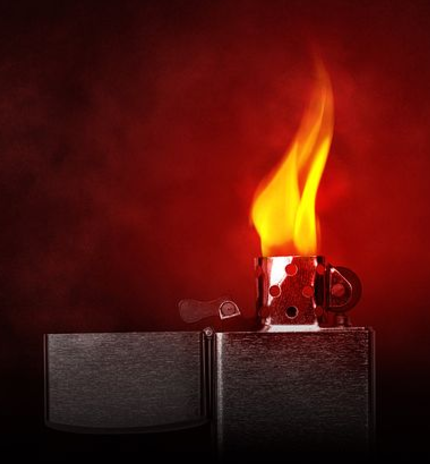Contra Einhorn
Courtesy of Joshua M Brown
 I consider David Einhorn to be among the brightest, most interesting thinkers in the investment markets and I read every investor letter from Greenlight as soon as they surface. I find myself agreeing with almost everything he says.
I consider David Einhorn to be among the brightest, most interesting thinkers in the investment markets and I read every investor letter from Greenlight as soon as they surface. I find myself agreeing with almost everything he says.
I just have a little nitpick with his contention that market participants are repeating the early 2000 dot com bubble.
His comments, via Bloomberg, yesterday:
“The bulls explain that traditional valuation metrics no longer apply to certain stocks,” the New York-based firm wrote in a letter to clients Tuesday that was seen by Bloomberg News. “Perhaps as the prospects for tax reform have dimmed, the market has regained enthusiasm for profitless companies that aren’t at risk of paying taxes.”
and…
As for when stock values might reset, the hedge fund didn’t forecast the timing.
“There was no catalyst that we know of that burst the dot-com bubble in March 2000, and we don’t have a particular catalyst in mind here,” the firm said in the letter. “That said, the top will be the top, and it’s hard to predict when it will happen.”
 I really don’t like the March 2000 comparison for a few reasons. Most of them aren’t worth repeating, but the overarching thing is that you need enthusiasm for there to be a bubble and pretty much everyone is miserable, or, at best, investing in the missionary position right now through index funds. No one seems to want to poke their head up and say enthusiastic things about the bull. Are the taxi drivers giving you Vanguard fund tickers?
I really don’t like the March 2000 comparison for a few reasons. Most of them aren’t worth repeating, but the overarching thing is that you need enthusiasm for there to be a bubble and pretty much everyone is miserable, or, at best, investing in the missionary position right now through index funds. No one seems to want to poke their head up and say enthusiastic things about the bull. Are the taxi drivers giving you Vanguard fund tickers?
As Chris Rock said, “there’s no sex in the champagne room.”
More importantly, when Einhorn asserts that “There was no catalyst that we know of that burst the dot-com bubble in March 2000,” he’s not correct. There was one. It was a Barron’s article, published over the weekend leading into Monday, March 20th. That was the top for the Nasdaq Composite (the rest of the market – aka “Old Economy” stocks had already begun selling off as no one wanted anything non-dot com).
The article was called “Burning Fast” by Jack Willoughby and it may have been the most important piece of investment journalism ever up until that time. The cover looked like this:
I still remember reading it.
Willoughby attacked the unprecedented craze for profitless companies in a very shrewd way and framed the entire concept in a way that no one else had thought to do. Almost all of the skeptical journalism surrounding the bubble up until then had been focused on valuation – but investors didn’t care about valuation at all. The internet was poised to change the world (that part we were right about), and anyone worried about valuation just didn’t get it.
The Barron’s piece took a different approach – they focused on the cash burn rates at these companies and it completely flipped the market sentiment around these names, pretty much overnight. Willoughby effectively created a deadpool and the mentality went from “Gotta catch ’em all” to “Who is going to die first?” It was truly remarkable. The way Willoughby set up timetables for when over a hundred newly minted companies would run out of cash was the thing that shook everyone out of their stupor long enough to press a different key than the Buy button.
Here’s a PDF of the Barron’s table.
What’s funny is that he gave Amazon 10 months to live at its current cash position / burn rate. Okay, so that one was wrong, but almost every other company on the list is long gone.
That was the catalyst. That Monday, Microstrategy, a “B2B” web company announced an accounting problem after the close and its stock was cut in half. I think it lost 150 dollars per share overnight. I watched it happen on a terminal. The wheels were in motion and the panic had begun. The term “burn rate” was on everyone’s lips. That was the top.
Sentiment can flip that fast, and when that turn happens, high-concept stocks with insane burn rates don’t stand a chance.
Back to 2017…
Amazon is not burning cash and it is not a high-concept stock. They dominate and take in an obscene amount of revenue. They have access to nearly limitless amounts of cheap capital and, as Professor Galloway says, “Cheap. Capital. Is. Awesome.”
This is not the dawning of the dot com phenomenon, it is the golden age, the period in which the old dot com dreams are all being realized, 20 years later.
 Moreover, Amazon can cut the cash-spend off in a second if it were so inclined. The burn rate is deliberate.
Moreover, Amazon can cut the cash-spend off in a second if it were so inclined. The burn rate is deliberate.
Ironically, if Bezos said tomorrow that they will, from here on out, seek a retailer-like profit margin and cool the investment jets, that would actually make shareholders revolt and sell the stock. Paradoxically, he almost has to keep spending / growing. The shareholder base is not looking to own shares of Target or even Oracle.
Speaking of which, if Willoughby were creating his “Burning Up” table today, then it would more likely be comprised of the brick and mortar retailers that Amazon is putting into Chapter 11 as opposed to the insanely profitable denizens of the Nasdaq 100. Today’s Nasdaq giants are earning profits around the clock, generating billions and billions around the world. Not to say that these stocks are cheap, but the 2000 comparison doesn’t stand up given the seriousness with which these companies are pursuing their strategies. This isn’t sock puppet bullshit.
More irony – by not investing heavily enough in technology, distribution, logistics, app-based commerce, etc, the old-line competitors to today’s tech giants all doomed themselves, one by one. By working to protect their mid-single digit growth rates and profit margins – the sort of thing the value investors of the 20th Century prized – they wrote their own epitaphs.
 As for Tesla, let’s just say that I don’t put it into the same category as Amazon. Einhorn may have a good point about there. But better men and women than I have already taken that one on – with dollars, not words. I simply put Tesla into Charlie Munger’s proverbial “Too Hard” pile and let the battle rage on without me.
As for Tesla, let’s just say that I don’t put it into the same category as Amazon. Einhorn may have a good point about there. But better men and women than I have already taken that one on – with dollars, not words. I simply put Tesla into Charlie Munger’s proverbial “Too Hard” pile and let the battle rage on without me.
Where I agree with Einhorn more generally is that the timing of the top won’t be easy to pick out in advance. Where I disagree is with the idea that there is something noble about a company pursuing reasonable profits today while waiting to be killed sometime in the near future. Best Buy shares sell for 13 times earnings. How many can I put you down for? You can have as much of that as you want, no one else wants it.
Unfortunately, if you’re a business in one of the sectors in which Google, Amazon and Facebook play (advertising, delivery, e-commerce, web services), death is the future that awaits you. Forgive me if I don’t fawn all over your below-market earnings multiple. It might be below-market for a very good reason.
Sources:
Einhorn’s Greenlight Warns of Bubble With Tax Reform Prospects Fading (Barron’s)
Microstrategy plummets (CNN Money)
Pictures of glasses, the tesla coil, and fire from Pixabay.




